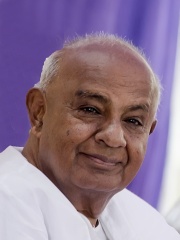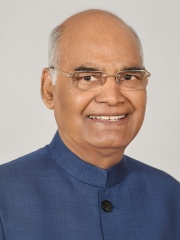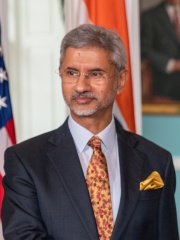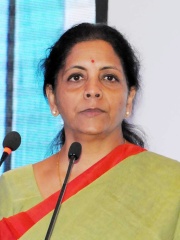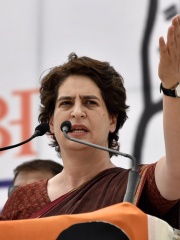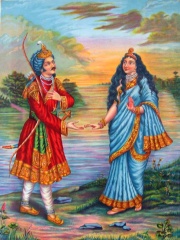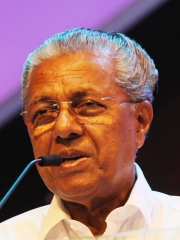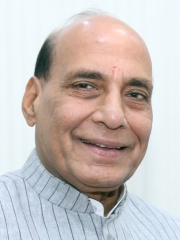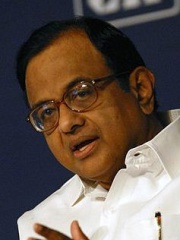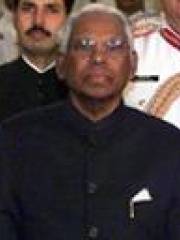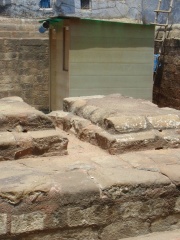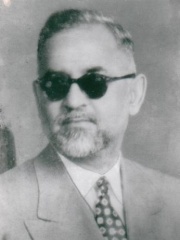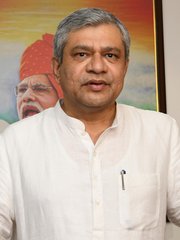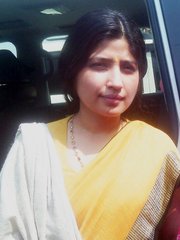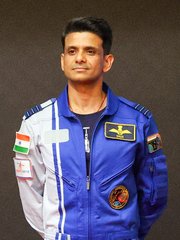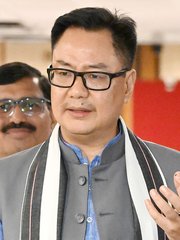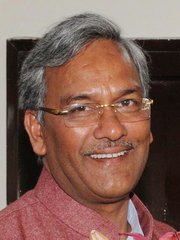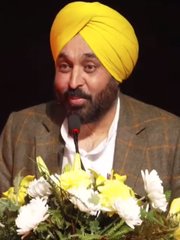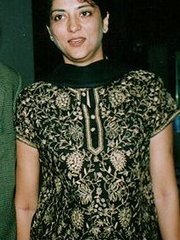
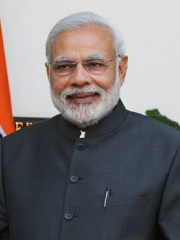

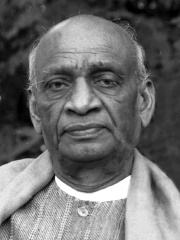
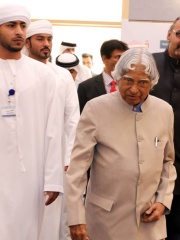
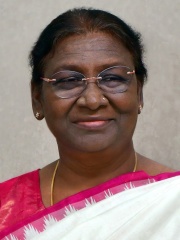
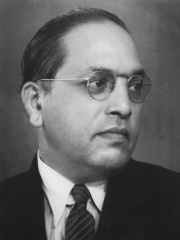
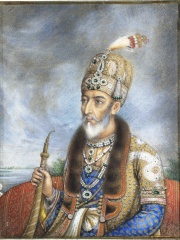
The Most Famous
POLITICIANS from India
This page contains a list of the greatest Indian Politicians. The pantheon dataset contains 19,576 Politicians, 339 of which were born in India. This makes India the birth place of the 12th most number of Politicians behind Japan, and Greece.
Top 10
The following people are considered by Pantheon to be the top 10 most legendary Indian Politicians of all time. This list of famous Indian Politicians is sorted by HPI (Historical Popularity Index), a metric that aggregates information on a biography's online popularity. Visit the rankings page to view the entire list of Indian Politicians.

1. Indira Gandhi (1917 - 1984)
With an HPI of 91.54, Indira Gandhi is the most famous Indian Politician. Her biography has been translated into 129 different languages on wikipedia.
Indira Priyadarśinī Gāndhī (née Nehru; 19 November 1917 – 31 October 1984) was an Indian politician and stateswoman who served as the Prime Minister of India from 1966 to 1977 and again from 1980 until her assassination in 1984 for four terms. She was India's first and only female prime minister, and a central figure in Indian politics as the leader of the Indian National Congress (INC). She was the daughter of Jawaharlal Nehru, the first prime minister of India. She was the mother of Rajiv Gandhi, who succeeded her as prime minister. Her cumulative tenure of 15 years and 350 days makes her the second-longest-serving Indian prime minister after her father. During her father Jawaharlal Nehru's premiership from 1947 to 1964, Gandhi was his hostess and accompanied him on his numerous foreign trips. In 1959, she played a part in the dissolution of the communist-led Kerala state government as then-president of the Indian National Congress, otherwise a ceremonial position to which she was elected earlier that year. Lal Bahadur Shastri, who had succeeded Nehru as prime minister upon his death in 1964, appointed her minister of information and broadcasting in his government; the same year she was elected to the Rajya Sabha, the upper house of the Indian Parliament. After Shastri's death in January 1966, Gandhi defeated her rival, Morarji Desai, in the INC's parliamentary leadership election to become leader and also succeeded Shastri as prime minister. She was the world's second female prime minister after Sirimavo Bandaranaike when she became prime minister of India. She led the Congress to victory in two subsequent elections, starting with the 1967 general election, in which she was first elected to the lower house of the Indian parliament, the Lok Sabha. In 1971, her party secured its first landslide victory since her father's sweep in 1962, focusing on issues such as poverty. But following the nationwide state of emergency she implemented, she faced massive anti-incumbency sentiment causing the INC to lose the 1977 election, which was the first time this happened in the history of India. She even lost her own parliamentary constituency. However, due to her portrayal as a strong leader and the weak governance of the Janata Party, her party won the next election by a landslide and she returned to the premiership. As prime minister, Gandhi was known for her uncompromising political stances and centralisation of power within the executive branch. In 1967, she headed a military conflict with China in which India repelled Chinese incursions into the Himalayas. In 1971, she went to war with Pakistan in support of the independence movement and war of independence in East Pakistan, which resulted in an Indian victory and the independence of Bangladesh, as well as increasing India's influence to the point where it became the sole regional power in South Asia. Another military operation against Pakistan, codenamed Operation Meghdoot, occurred during her tenure in 1984, which led to India expanding the territory it effectively controlled in the disputed Kashmir region. Gandhi also played a crucial role in initiating India's first successful nuclear weapon test in 1974. Her rule saw India grow closer to the Soviet Union by signing a friendship treaty in 1971 to ward off perceived geopolitical threat as a result of the U.S. warming up to China. India received military, financial, and diplomatic support from the Soviet Union during its conflict with Pakistan in the same year. Though India was at the forefront of the Non-Aligned Movement, Gandhi made it one of the Soviet Union's closest allies in Asia, each often supporting the other in proxy wars and at the United Nations. Responding to separatist tendencies and a call for revolution, she instituted a state of emergency from 1975 to 1977, during which she ruled by decree and basic civil liberties were suspended. More than 100,000 political opponents, journalists and dissenters were imprisoned. She faced the growing Sikh separatism movement throughout her fourth premiership; in response, she ordered Operation Blue Star, which involved military action in the Golden Temple and killed hundreds of Sikhs. On 31 October 1984, she was assassinated by two of her bodyguards, both of whom were Sikh nationalists seeking retribution for the events at the temple. Gandhi was cremated at the site now known as Shakti Sthal (transl. 'Place of strength'). The site is marked by a large monolithic rock of iron ore commemorating her as the "Iron Lady of India". Gandhi is remembered as one of the most powerful women in the world. Her supporters cite her leadership during victories over geopolitical rivals China and Pakistan, the Green Revolution, a growing economy in the early 1980s, and her anti-poverty campaign that led her to be known as Mother Indira among the country's poor and rural population. Critics note her cult of personality and authoritarian rule of India during the Emergency. In 1999, she was named "Woman of the Millennium" in an online poll organised by the BBC. In 2020, she was named by Time magazine among the 100 women who defined the past century as counterparts to the magazine's previous choices for Man of the Year.

2. Narendra Modi (b. 1950)
With an HPI of 88.81, Narendra Modi is the 2nd most famous Indian Politician. His biography has been translated into 145 different languages.
Narendra Damodardas Modi (born 17 September 1950) is an Indian politician who has served as the prime minister of India since 2014. Modi was the chief minister of Gujarat from 2001 to 2014 and is the member of parliament (MP) for Varanasi. He is a member of the Bharatiya Janata Party (BJP) and of the Rashtriya Swayamsevak Sangh (RSS), a right-wing Hindutva paramilitary volunteer organisation. He is the longest-serving prime minister outside the Indian National Congress. Modi was born and raised in Vadnagar, Bombay State (present-day Gujarat), where he completed his secondary education. He was introduced to the RSS at the age of eight, becoming a full-time worker for the organisation in Gujarat in 1971. The RSS assigned him to the BJP in 1985, and he rose through the party hierarchy, becoming general secretary in 1998. In 2001, Modi was appointed chief minister of Gujarat and elected to the legislative assembly soon after. His administration is considered complicit in the 2002 Gujarat violence and has been criticised for its management of the crisis. According to official records, a little over 1,000 people were killed, three-quarters of whom were Muslim; independent sources estimated 2,000 deaths, mostly Muslim. A Special Investigation Team appointed by the Supreme Court of India in 2012 found no evidence to initiate prosecution proceedings against him, causing widespread anger and disbelief among the country's Muslim communities. While his policies as chief minister were credited for encouraging economic growth, his administration was criticised for failing to significantly improve health, poverty and education indices in the state. In the 2014 Indian general election, Modi led the BJP to a parliamentary majority, the first for a party since 1984. His administration increased direct foreign investment and reduced spending on healthcare, education, and social-welfare programs. Modi began a high-profile sanitation campaign and weakened or abolished environmental and labour laws. His demonetisation of banknotes in 2016 and introduction of the Goods and Services Tax in 2017 sparked controversy. Modi's administration launched the 2019 Balakot airstrike against an alleged terrorist training camp in Pakistan; the airstrike failed, but the action had nationalist appeal. Modi's party won the 2019 general election. In its second term, his administration revoked the special status of Jammu and Kashmir and introduced the Citizenship Amendment Act, prompting widespread protests and spurring the 2020 Delhi riots in which Muslims were brutalised and killed by Hindu mobs. Three controversial farm laws led to sit-ins by farmers across the country, eventually causing their formal repeal. Modi oversaw India's response to the COVID-19 pandemic, during which, according to the World Health Organization, 4.7 million Indians died. In the 2024 general election, Modi's party lost its majority in the lower house of Parliament and formed a government leading the National Democratic Alliance coalition. Following a terrorist attack in Indian-administered Jammu and Kashmir, Modi presided over the 2025 India–Pakistan conflict, which resulted in a ceasefire. Under Modi's tenure, India has experienced democratic backsliding and has shifted towards an authoritarian style of government, with a cult of personality centred around him. As prime minister, he has received consistently high approval ratings within India. Modi has been described as engineering a political realignment towards right-wing politics. He remains a highly controversial figure domestically and internationally over his Hindu nationalist beliefs and handling of the Gujarat violence, which have been cited as evidence of a majoritarian and exclusionary social agenda.

3. Ashoka (304 BC - 232 BC)
With an HPI of 85.09, Ashoka is the 3rd most famous Indian Politician. His biography has been translated into 161 different languages.
Ashoka, also known as Asoka or Aśoka ( ə-SHOH-kə; Sanskrit: [ɐˈɕoːkɐ], IAST: Aśoka; c. 304 – 232 BCE), most commonly known as Ashoka the Great, was Emperor of Magadha from c. 268 BCE until his death, and the third ruler from the Mauryan dynasty. His empire covered a large part of the Indian subcontinent, stretching from present-day Afghanistan in the west to present-day Bangladesh in the east, with its capital at Pataliputra. A patron of Buddhism, he is credited with an important role in the spread of Buddhism across ancient Asia. The Edicts of Ashoka state that during his eighth regnal year (c. 260 BCE), he conquered Kalinga after a brutal war. Ashoka subsequently devoted himself to the propagation of "dhamma" or righteous conduct, the major theme of the edicts. Ashoka's edicts suggest that a few years after the Kalinga War, he was gradually drawn towards Buddhism. The Buddhist legends credit Ashoka with establishing a large number of stupas, patronising the Third Buddhist council, supporting Buddhist missionaries, and making generous donations to the sangha. Ashoka's existence as a historical emperor had almost been forgotten, but since the decipherment in the 19th century of sources written in the Brahmi script, Ashoka holds a reputation as one of the greatest Indian emperors. The State Emblem of the modern Republic of India is an adaptation of the Lion Capital of Ashoka. Ashoka's wheel, the Ashoka Chakra, is adopted at the centre of the National Flag of India.

4. Vallabhbhai Patel (1875 - 1950)
With an HPI of 82.30, Vallabhbhai Patel is the 4th most famous Indian Politician. His biography has been translated into 76 different languages.
Vallabhbhai Jhaverbhai Patel (Gujarati: [ʋəlːəbʱ.bʱɑi dʒʱəʋeɾbʱɑi pəʈel]; 31 October 1875 – 15 December 1950), commonly known as Sardar Vallabhbhai Patel, was an Indian independence activist and statesman who served as the first Deputy Prime Minister and Home Minister of India from 1947 to 1950. He was a senior leader of the Indian National Congress, who played a significant role in the Indian independence movement and India's political integration. In Persian and elsewhere, he was often called Sardar meaning "chief". He acted as the Home Minister during the political integration of India and the Indo-Pakistani War of 1947. Patel was born in Nadiad city (present-day Kheda district, Gujarat) and raised in the countryside of the state of Gujarat. He was a successful lawyer. One of Mahatma Gandhi's earliest political lieutenants, he organised peasants from Kheda, Borsad and Bardoli in Gujarat in non-violent civil disobedience against the British Raj, becoming one of the most influential leaders in Gujarat. He was appointed as the 49th President of Indian National Congress. Under the chairmanship of Patel "Fundamental Rights and Economic Policy" resolution was passed by the Congress. Patel's position at the highest level in the Congress was largely connected with his role from 1934 onwards (when the Congress abandoned its boycott of elections) in the party organisation. Based at an apartment in Bombay, he became the Congress's main fundraiser and chairman of its Central Parliamentary Board, playing the leading role in selecting and financing candidates for the 1934 elections to the Central Legislative Assembly in New Delhi and for the provincial elections of 1936. While promoting the Quit India Movement, Patel made a climactic speech to more than 100,000 people gathered at Gowalia Tank in Bombay on 7 August 1942. Historians believe that Patel's speech was instrumental in electrifying nationalists, who up to then had been sceptical of the proposed rebellion. Patel's organising work in this period is credited by historians with ensuring the success of the rebellion across India. As the first Home Minister and Deputy Prime Minister of India, Patel organised relief efforts for partition refugees fleeing to Punjab and Delhi from Pakistan and worked to restore peace. Besides those provinces that had been under direct British rule, approximately 565 self-governing princely states had been released from British suzerainty by the Indian Independence Act 1947 (10 & 11 Geo. 6. c. 30). Patel, together with Jawaharlal Nehru and Louis Mountbatten persuaded almost every princely state to accede to India. Patel's commitment to national integration in the newly independent country earned him the sobriquet "Iron Man of India". He is also remembered as the "patron saint of India's civil servants" for playing a pioneering role in establishing the modern All India Services system. The Statue of Unity, the world's tallest statue which was erected by the Indian government at a cost of US$420 million, was dedicated to him on 31 October 2018 and is approximately 182 metres (597 ft) in height.
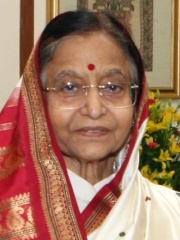
5. Pratibha Patil (b. 1934)
With an HPI of 81.77, Pratibha Patil is the 5th most famous Indian Politician. Her biography has been translated into 87 different languages.
Pratibha Devisingh Patil (born 19 December 1934), also known as Pratibha Patil Shekhawat, is an Indian politician and lawyer who served as the president of India from 2007 to 2012. She was the first woman to become the president of India. A member of the Indian National Congress, she also served as the Governor of Rajasthan from 2004 to 2007, and was a member of the Lok Sabha from 1991 to 1996.

6. A. P. J. Abdul Kalam (1931 - 2015)
With an HPI of 81.57, A. P. J. Abdul Kalam is the 6th most famous Indian Politician. His biography has been translated into 85 different languages.
Avul Pakir Jainulabdeen Abdul Kalam ( UB-duul kə-LAHM; 15 October 1931 – 27 July 2015) was an Indian aerospace scientist and statesman who served as the president of India from 2002 to 2007. Born and raised in a Muslim family in Rameswaram, Tamil Nadu, Kalam studied physics and aerospace engineering. He spent the next four decades as a scientist and science administrator, mainly at the Defence Research and Development Organisation (DRDO) and Indian Space Research Organisation (ISRO) and was intimately involved in India's civilian space programme and military missile development efforts. He was known as the "Missile Man of India" for his work on the development of ballistic missile and launch vehicle technology. He also played a pivotal organisational, technical, and political role in Pokhran-II nuclear tests in 1998, India's second such test after the first test in 1974. Kalam was elected as the president of India in 2002 with the support of both the ruling Bharatiya Janata Party and the then-opposition Indian National Congress. He was widely referred to as the "People's President". He engaged in teaching, writing and public service after his presidency. He was a recipient of several awards, including the Bharat Ratna, India's highest civilian honour. While delivering a lecture at IIM Shillong, Kalam collapsed and died from an apparent cardiac arrest on 27 July 2015, aged 83. Thousands attended the funeral ceremony held in his hometown of Rameswaram, where he was buried with full state honours. A memorial was inaugurated near his home town in 2017.

7. Droupadi Murmu (b. 1958)
With an HPI of 80.99, Droupadi Murmu is the 7th most famous Indian Politician. Her biography has been translated into 73 different languages.
Droupadi Murmu (born Durgi Tudu; 20 June 1958) is an Indian politician who has served as the president of India since 2022. She won the 2022 presidential election with the backing of the Bharatiya Janata Party (BJP). She is the first person belonging to a tribal community and also the second woman, after Pratibha Patil, to hold the office. She is also the youngest person to occupy the post (at 64) and the first president born in independent India. Previously, she served as the governor of Jharkhand from 2015 to 2021, being the longest-serving governor for that state, as a member of the Odisha Legislative Assembly from Rairangpur Assembly constituency from 2000 to 2009, and as minister of State (Independent Charge), Government of Odisha, from 2000 to 2004. Before entering politics, she worked as a clerk in the State Irrigation and Power Department from 1979 to 1983, and then as a teacher in Rairangpur from 1994 until 1997.

8. B. R. Ambedkar (1891 - 1956)
With an HPI of 80.47, B. R. Ambedkar is the 8th most famous Indian Politician. His biography has been translated into 132 different languages.
Bhimrao Ramji Ambedkar (Bhīmrāo Rāmjī Āmbēḍkar; 14 April 1891 – 6 December 1956) was an Indian jurist, economist, social reformer and political leader who chaired the committee that drafted the Constitution of India based on the debates of the Constituent Assembly of India and the first draft of Sir Benegal Narsing Rau. Ambedkar served as Law and Justice minister in the first cabinet of Jawaharlal Nehru. He later renounced Hinduism and converted to Buddhism, inspiring the Dalit Buddhist movement. After graduating from Elphinstone College, University of Bombay, Ambedkar studied economics at Columbia University and the London School of Economics, receiving doctorates in 1927 and 1923, respectively, and was among a handful of Indian students to have done so at either institution in the 1920s. During his time at the Columbia University, Ambedkar came under the influence of John Dewey and his philosophy of pragmatism. He also trained in the law at Gray's Inn, London. In his early career, he was an economist, professor, and lawyer. His later life was marked by his political activities; he became involved in campaigning and negotiations for partition, publishing journals, advocating political rights and social freedom for Dalits, and contributing to the establishment of the state of India. In 1956, he converted to Buddhism, initiating mass conversions of Dalits. In 1990, the Bharat Ratna, India's highest civilian award, was posthumously conferred on Ambedkar. The salutation Jai Bhim (lit. "Hail Bhim") is used by his followers to honour him. He is also referred to by the honorific Babasaheb, meaning "Respected Father".

9. Bahadur Shah Zafar (1775 - 1862)
With an HPI of 80.20, Bahadur Shah Zafar is the 9th most famous Indian Politician. His biography has been translated into 59 different languages.
Bahadur Shah II (Abu Zafar Siraj-ud-din Muhammad; 24 October 1775 – 7 November 1862), widely known by his poetic title Bahadur Shah Zafar (Persian: بهادر شاه ظفر; Zafar lit. 'Victory'), was the twentieth and last Mughal emperor and an Urdu poet. He was a titular Emperor with his authority limited to the Walled City of Delhi, but was recognised the Emperor of India by the forces opposing East India Company forces across the Indian subcontinent during the Indian Rebellion of 1857. Zafar was exiled to Yangon in British-controlled Burma in December 1857 by the East India Company after rebel defeat in the war. His spouse was Zeenat Mahal. He was the second son and the successor to his father, Akbar II, who died in 1837. After the dissolution of the Mughal Empire following the war, the title of Empress of India was assumed by Queen Victoria (but only after 1876). Bahadur Shah Zafar's father, Akbar II, had been imprisoned by the British and he was not his father's preferred choice as his successor. One of Akbar Shah's queens pressured him to declare her son, Mirza Jahangir, as his successor. However, the East India Company exiled Jahangir after he attacked their resident in the Red Fort, paving the way for Bahadur Shah to assume the throne.
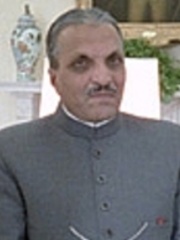
10. Muhammad Zia-ul-Haq (1924 - 1988)
With an HPI of 79.61, Muhammad Zia-ul-Haq is the 10th most famous Indian Politician. His biography has been translated into 66 different languages.
Muhammad Zia-ul-Haq (12 August 1924 – 17 August 1988) was a Pakistani military officer and politician who served as the sixth president of Pakistan from 1978 until his death in an airplane crash in 1988. He also served as the second chief of the army staff of the Pakistan Army from 1976 until his death. The country's longest-serving de facto head of state and chief of the army staff, Zia's political ideology is known as Ziaism. Born in Jalandhar, Punjab, Zia was trained at the Indian Military Academy in Dehradun and fought in the Second World War under the British Indian Army. Following the partition of India in 1947, he joined the Pakistan Army as a part of the Frontier Force Regiment. Zia was on active duty in Kashmir during the 1965 war between India and Pakistan, and after it he was promoted to colonel. During Black September, he played a prominent role as an advisor of the Jordanian Armed Forces against the Palestine Liberation Organization. In 1976, Zia was elevated to the rank of general and was appointed as chief of the army staff by Prime Minister Zulfikar Ali Bhutto, succeeding Tikka Khan. In July 1977, Zia organized Operation Fair Play, in which he overthrew Bhutto's federal government, declared martial law and assumed the office of the chief martial law administrator, dissolved the federal and provincial legislatures—hence suspending the provincial governments as well and declaring governor's rule across all provinces—and suspended the constitution. The coup was the second in Pakistan's history. Zia remained de facto leader for over a year, assuming the presidency in September 1978, after Fazal Ilahi Chaudhry resigned. He directed a policy of Islamisation in Pakistan, escalated the country's atomic bomb project and instituted industrialisation and deregulation, which significantly improved Pakistan's economy. In 1979, following the Soviet invasion of Afghanistan, Zia adopted an anti-Soviet stance and aided the Afghan mujahideen. He bolstered ties with China and the United States, and emphasised Pakistan's role in the Islamic world. Zia held non-partisan elections in 1985 and appointed Muhammad Khan Junejo prime minister, though he accumulated more presidential powers through the Eighth Amendment to the Constitution. He dismissed Junejo's government on charges of economic stagflation and announced a general election in November 1988. However, on August 1988, while travelling from Bahawalpur to Islamabad, Zia died in an aircraft crash near the Sutlej River. He is buried at the Faisal Mosque in Islamabad. Zia dominated Pakistan's politics for over a decade and his proxy war against the Soviet Union is credited with leading to the Taliban takeover of Afghanistan. He is praised by right-wing conservatives for his desecularisation efforts and opposition to Western culture. Conversely, Zia's detractors criticise his authoritarianism, his press censorship, his purported religious intolerance, his suppression of women's rights by Hudood Ordinance, and his weakening of democracy in Pakistan.
People
Pantheon has 339 people classified as Indian politicians born between 2000 BC and 1991. Of these 339, 116 (34.22%) of them are still alive today. The most famous living Indian politicians include Narendra Modi, Pratibha Patil, and Droupadi Murmu. The most famous deceased Indian politicians include Indira Gandhi, Ashoka, and Vallabhbhai Patel. As of April 2024, 25 new Indian politicians have been added to Pantheon including Seeman, Ashwini Vaishnaw, and Tamilisai Soundararajan.
Living Indian Politicians
Go to all RankingsNarendra Modi
1950 - Present
HPI: 88.81
Pratibha Patil
1934 - Present
HPI: 81.77
Droupadi Murmu
1958 - Present
HPI: 80.99
H. D. Deve Gowda
1933 - Present
HPI: 74.63
Ram Nath Kovind
1945 - Present
HPI: 70.16
S. Jaishankar
1955 - Present
HPI: 66.31
Nirmala Sitharaman
1959 - Present
HPI: 64.60
Priyanka Gandhi
1972 - Present
HPI: 64.30
Shantanu
HPI: 62.56
Pinarayi Vijayan
1945 - Present
HPI: 61.42
Rajnath Singh
1951 - Present
HPI: 61.17
P. Chidambaram
1945 - Present
HPI: 60.29
Deceased Indian Politicians
Go to all RankingsIndira Gandhi
1917 - 1984
HPI: 91.54
Ashoka
304 BC - 232 BC
HPI: 85.09
Vallabhbhai Patel
1875 - 1950
HPI: 82.30
A. P. J. Abdul Kalam
1931 - 2015
HPI: 81.57
B. R. Ambedkar
1891 - 1956
HPI: 80.47
Bahadur Shah Zafar
1775 - 1862
HPI: 80.20
Muhammad Zia-ul-Haq
1924 - 1988
HPI: 79.61
Kocheril R. Narayanan
1921 - 2005
HPI: 79.03
Razia Sultana
1205 - 1240
HPI: 79.00
Jawaharlal Nehru
1889 - 1964
HPI: 78.99
Rani of Jhansi
1828 - 1858
HPI: 78.29
Zakir Husain
1897 - 1969
HPI: 77.11
Newly Added Indian Politicians (2025)
Go to all RankingsSeeman
1966 - Present
HPI: 43.46
Ashwini Vaishnaw
1970 - Present
HPI: 41.65
Tamilisai Soundararajan
1961 - Present
HPI: 41.60
Himanta Biswa Sarma
1969 - Present
HPI: 40.26
Dimple Yadav
1978 - Present
HPI: 40.11
Shubhanshu Shukla
1985 - Present
HPI: 40.00
Mahua Moitra
1974 - Present
HPI: 39.08
Kiren Rijiju
1971 - Present
HPI: 38.94
Anurag Thakur
1974 - Present
HPI: 38.39
Trivendra Singh Rawat
1960 - Present
HPI: 38.24
Bhagwant Mann
1973 - Present
HPI: 36.83
Priya Dutt
1966 - Present
HPI: 35.57
Overlapping Lives
Which Politicians were alive at the same time? This visualization shows the lifespans of the 25 most globally memorable Politicians since 1700.

